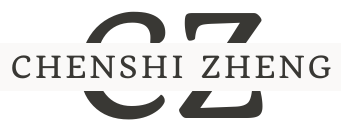In a world where change is the only constant, being future-ready isn’t just a good idea; it’s essential. Enter the future readiness map—a savvy tool that helps organizations navigate the wild terrain of tomorrow. Think of it as a GPS for success, guiding teams through the twists and turns of evolving trends and technologies.
Table of Contents
ToggleWhat Is a Future Readiness Map?
A future readiness map acts as a strategic tool for organizations to assess their preparedness for emerging challenges. This resource guides decision-makers in identifying opportunities within evolving landscapes.
Definition and Purpose
A future readiness map outlines the ability of organizations to adapt to changing environments. It enhances awareness of trends, technologies, and possible disruptions. The primary purpose lies in strengthening strategic planning, ensuring sustainable growth. By aligning organizational goals with future possibilities, companies create a proactive approach rather than a reactive one. This readiness map fosters resilience and encourages innovation, enabling organizations to navigate complexity effectively.
Key Components
Numerous components contribute to the effectiveness of a future readiness map. Clear vision statements define the organization’s long-term aspirations. Thorough trend analysis provides insight into market shifts and technological advancements. Collaboration frameworks enhance communication among teams, promoting a unified approach. Regular assessments allow for adjustments to strategies, ensuring relevance over time. Lastly, stakeholder engagement secures buy-in from key players, reinforcing commitment to future readiness initiatives. Each element works cohesively to create a comprehensive roadmap for success.
Importance of Future Readiness

Future readiness significantly impacts organizational success in a dynamic landscape. With constant changes, organizations must remain alert and prepared for various market shifts.
Adapting to Changing Landscapes
Organizations face numerous challenges due to rapid changes in technology and consumer preferences. Adapting to these shifting landscapes ensures that businesses stay relevant. The future readiness map helps identify trends early, allowing organizations to pivot their strategies efficiently. Proficiency in recognizing potential disruptions empowers companies to respond swiftly and sustainably. Regular assessments within the map maintain awareness of emerging threats. As a result, adaptability becomes ingrained in the organizational culture, enhancing resilience against unforeseen challenges.
Enhancing Competitive Advantage
Having a future readiness map enhances a company’s competitive edge. Companies gain critical insights into market dynamics, allowing informed and proactive strategic decisions. Understanding customer needs and technology trends positions organizations ahead of competitors. Collaboration frameworks outlined in the readiness map foster innovation through shared knowledge. Engaging stakeholders in the planning process creates a unified vision, further solidifying competitive advantage. Increased agility and foresight ultimately lead to sustained growth in challenging environments, making future readiness a vital asset for long-term success.
Developing a Future Readiness Map
Creating a future readiness map involves assessing current capabilities and identifying future trends. This structured approach ensures organizations remain agile amid changing circumstances.
Assessment of Current Capabilities
Understanding existing capabilities forms the foundation of the future readiness map. Organizations evaluate resources, including workforce skills, technology infrastructure, and operational processes. This assessment identifies gaps where improvements are necessary. It also aligns current strengths with the organization’s strategic objectives. Conducting regular reviews of these capabilities allows leaders to measure progress effectively. By identifying areas needing enhancement, organizations can prioritize resources and training, fostering an environment that supports adaptability.
Identifying Future Trends
Recognizing future trends is crucial for strategic planning. Organizations analyze market dynamics, competitor behavior, and emerging technologies. Engaging with industry experts and conducting market research enhances this understanding. Gathering insights helps predict potential disruptions and opportunities. Analyzing data from various sources aids in making informed projections about shifts in consumer behavior and technological advancements. Prioritizing these trends ensures that decision-makers stay ahead, adjusting strategies as necessary to meet future demands. Embracing innovation positions organizations favorably for long-term success.
Implementing the Future Readiness Map
Implementing a future readiness map involves critical elements that enhance organizational adaptability. Stakeholder engagement serves as one of the foundational pillars.
Stakeholder Engagement
Engaging stakeholders fosters a collaborative atmosphere, essential for a future readiness map’s success. Regular communication with stakeholders clarifies goals and expectations, ensuring everyone shares a unified vision. Active participation encourages diverse perspectives, enriching the decision-making process. It’s beneficial to involve employees, customers, and industry experts, as their insights drive innovative solutions. Gathering feedback allows organizations to refine strategies, maintaining relevance amid changing dynamics. Establishing forums or workshops can further enhance connections, promoting transparency and inclusivity. Ultimately, robust stakeholder engagement cultivates commitment, creating a shared sense of purpose that strengthens future readiness.
Creating Actionable Strategies
Creating actionable strategies is crucial for translating a future readiness map into tangible outcomes. It starts with setting clear objectives aligned with identified trends and stakeholder insights. Organizations can prioritize initiatives that address key areas of development, such as workforce skills and technology enhancements. Developing specific action plans ensures that teams know their roles and deadlines, fostering accountability. Regular evaluations of progress create opportunities for adjustments, optimizing effectiveness. Incorporating metrics to measure success helps track advancements in readiness. When organizations create adaptable strategies, they position themselves to respond quickly to emerging challenges, ensuring sustained growth and competitiveness in dynamic environments.
Embracing a future readiness map is essential for organizations aiming to thrive in a rapidly changing landscape. This strategic tool not only enhances adaptability but also fosters a culture of innovation and proactive decision-making. By engaging stakeholders and aligning resources with emerging trends, organizations can navigate complexities with confidence.
Regular assessments and clear objectives ensure that companies remain agile and responsive to market shifts. As they leverage insights from the future readiness map, they position themselves ahead of competitors, ready to seize opportunities and tackle challenges. Ultimately, the commitment to future readiness sets the stage for sustainable growth and long-term success in an unpredictable world.




